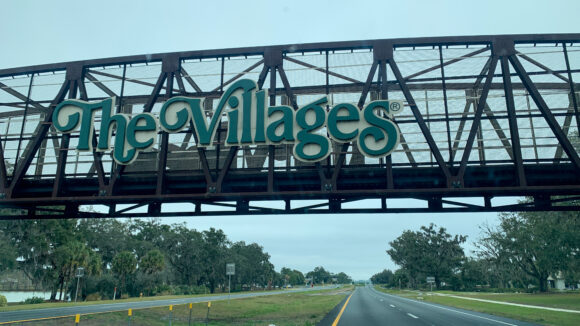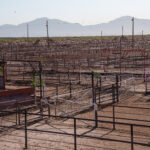The largest retirement community in the world is expanding even further with a nearly $130 million high-yield debt deal.
The Villages, a 57,000-acre Floridian megaplex, already part of the fastest-growing metropolitan area in the US, plans to tap municipal-bond investors to help finance a new development with more than 2,800 new homes.
The expansion is part of broader two-decade plan to capitalize on the aging American population and the appeal of a resort-like community among the Baby Boomer generation. The Villages — which has been the subject of documentaries with titles like “The Bubble” and “Some Kind of Heaven” — expects to see the number of its residents boom by 60% to roughly 260,000 people by 2045.
The unrated bonds, sold through a local development district, come with a high degree of risk — sitting at the intersection of two distress-ridden segments in the muni market, senior living and real estate. Offering documents detail factors investors should consider including an economic downturn, a possible hurricane or a lack of liquidity in the secondary market.
Still, the issue is insulated from many of the risks associated with new construction real estate deals, said Tamara Lowin, a senior municipal credit analyst at VanEck. “The planned community is adjacent to existing attractive communities, all permits are in place, and there is proven demand for the product,” she said.
Also, the Villages have scale on their side. The enclave is divided into clusters of neighborhoods, connected by hundreds of miles of golf-course paths and centered around town squares that feature shops, cover-band concerts and free-flowing drinks. Open to adults that are at least 55 years old, it features roughly 60 golf courses, over 3,000 resident social clubs and the lowest crime rate in Florida.
Founded in the 1980s by developer H. Gary Morse and his father Harold Schwartz, what was once pasture and wetlands, is now a real estate empire. It’s run by a holding company owned by Morse’s children, that controls almost every aspect of the community including the main brokerage firm, local newspaper, television stations, and retail shops. Individual homeowners are required to keep the exterior paint fresh and grass trimmed.
Window air-conditioner units are banned, as are political lawn signs, though the community does draw attention during elections with dueling golf-cart rallies.
Representatives for the Villages did not reply to requests for comment, though receptionists for the community’s switchboard answer the phone with a stock message — “It’s a beautiful day in the Villages, how may I help you?”
The bond deal is managed by Jefferies Financial Group Inc. and Morgan Stanley. Proceeds of the sale will be used to finance infrastructure related to the development like roads, bridges, landscaping and irrigation necessary for the new homes. The new district will also include 36 holes of golf and multiple recreation centers.
Jeffery Timlin, lead portfolio manager for Sage Advisory Services’ municipal strategies, said that investors need to do their homework on this deal, especially given that many retirees live on a fixed income.
“In terms of their revenue base, they’re very focused in on a very limited area to draw from,” he said. “It’s a higher risk credit no doubt.”
The estimated average value of the yet-to-be-constructed single-family homes is $400,000, according to bond documents. Homes in the Villages come in a variety of styles and prices typically range from $200,000 to over $1 million, according to an investor roadshow.
The Villages have tapped the muni market a number of times through different issuers. In January, a different entity sold nearly $260 million of taxable bonds backed by the amenity fees charged to residents and revenue generated by recreation facilities operations.
Ten-year securities in that issue were priced with a 5.2% yield, or a 62 basis-point spread over the benchmark. They carried an AA- rating by S&P Global Ratings.
The new unrated bonds, which are considered high-yield in the muni market, are secured by a type of property fee imposed on certain parcels in the new development.
“Variations of the Villages credit have been in the market for a while so people know it well. Due to the familiarity, as long as it is priced appropriately, they should be able to find sufficient demand,” said Daniel Solender, head of municipal investments at Lord Abbett & Co.
“The high yield market for municipal bonds remains strong as fund flows continue picking up and as new issue supply is not as high,” he said.
Was this article valuable?
Here are more articles you may enjoy.



 Former CEO of Nonprofit P/C Statistical Agent Sentenced for Stealing Millions
Former CEO of Nonprofit P/C Statistical Agent Sentenced for Stealing Millions  More US Beef Plants May Close as Cattle Herds Keep Tightening
More US Beef Plants May Close as Cattle Herds Keep Tightening  Senators Launch Probe Into Demotech’s Ratings in Florida
Senators Launch Probe Into Demotech’s Ratings in Florida  Brown & Brown Files Suit Over Alleged Howden Poaching of 200+ Employees
Brown & Brown Files Suit Over Alleged Howden Poaching of 200+ Employees 

